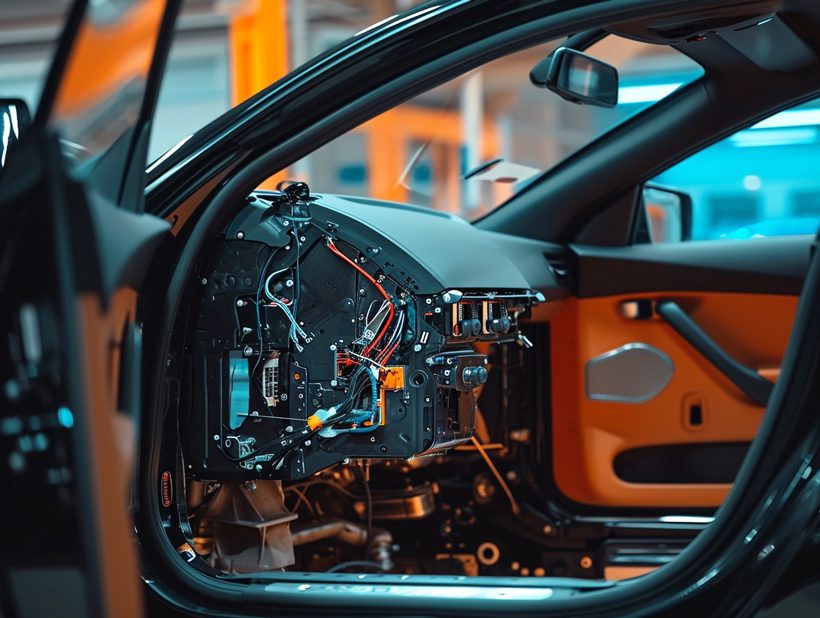Stuck with a power window that won’t budge? We’ve all been there, and it’s as frustrating as it gets. But don’t worry, we’re here to guide you through the troubleshooting process. From a stubborn window that refuses to roll down to one that’s stuck in the abyss between your door panels, we’ve got the fixes you need.
Understanding the root of your power window issues is key, and it often boils down to either the motor or the switch. We’ll show you how to diagnose these common culprits with ease. You’ll be back to enjoying that breeze on your face in no time!
Before you consider a costly trip to the mechanic, let’s walk through some simple steps to identify and fix those pesky power window problems ourselves. It’s easier than you might think, and we’re here to help every step of the way.
Common Power Window Problems
When dealing with power window malfunctions in our vehicles, recognizing the signs of trouble can save us plenty of time and money. Understanding these common issues helps us pinpoint the cause more accurately:
- Slow movement or uneven travel: This may indicate an obstruction in the window tracks or a wearing out of the window regulator.
- Strange noises when operating the window: Grinding or clicking sounds could point to mechanical issues within the door panel.
- Windows not staying up: This can be a telltale sign of a failing window regulator or a damaged window motor.
- Complete failure to open or close: Often this is a clear indicator that the power window motor, switch, or fuse may require attention.
To dive deeper into these problems, let’s look at the motor and switch, which are the heart and command center of our power window system.

The motor is responsible for the heavy lifting, and when it’s faulty, it could lead to intermittent or complete loss of function. A multimeter test can assess whether the motor is receiving power. We shouldn‚Äôt overlook the switch, as it directs the motor to roll the windows up or down. Faulty wiring or a bad connection can sometimes be the reason behind a non-responsive switch.
Here are some steps we can follow for a preliminary checkup:
- Listen for any unusual sounds when the window moves.
- Gently rock the window to check for excessive play or misalignment.
- Test the switch operation on both the driver’s panel and the individual doors.
- Inspect the fuse box for any blown fuses connected to the window circuit.
When diagnosing power window issues, it’s important to combine our observations with these simple tests. Doing so will narrow down the possible causes before we proceed with more elaborate troubleshooting procedures. With a careful analysis, we’ll be able to determine whether we can manage a DIY fix or if it’s time to seek professional assistance.
Signs of a Faulty Window Motor
When we’re dealing with power window problems, it’s crucial to recognize the signs that point specifically to a faulty window motor. The window motor is the workhorse of the system, and if it’s not functioning correctly, our windows will not operate as they should. Here are several telltale indicators that our window motor may need attention.
- Unresponsive Windows: Despite pressing the window button, the window won’t move. This could signal a dead motor.
- Slower Operation: The window moves more slowly than usual, a sign that the motor may be on its last legs.
- Spotty Movement: The window stops and starts during operation, which can suggest intermittent motor failure.
- Grinding Noise: A distinct grinding sound when the window moves often indicates motor gear issues.
To further diagnose a faulty window motor, we’ll need to perform a few tests. Firstly, using a multimeter, we can check for power at the motor’s wiring. No voltage reading could pinpoint a broken motor or wiring issues. We should also listen for a humming sound from the motor when we engage the window switch; the absence of this sound typically signifies a problem with the motor itself.

Furthermore, we should inspect the fuse related to the power window system. A blown fuse might cause motor malfunction, but it’s also a sign of potential electrical problems elsewhere in the circuit. Therefore, replacing a fuse should always be followed by additional diagnostics to ensure the underlying issue doesn’t recur.
Here’s a quick reference table summarizing symptoms and related motor issues:
| Symptom | Likely Motor Issue |
|---|---|
| Unresponsive windows | Dead motor |
| Slower operation | Motor wearing out |
| Spotty movement | Intermittent failure |
| Grinding noise | Gear problems |
By identifying these symptoms and conducting thorough tests, we can effectively pinpoint a faulty window motor as the source of our issues. Remember that dealing with electrical components can be tricky; if we’re ever in doubt, it’s best to consult a professional for a definitive diagnosis and repair.
Testing the Window Motor
When tackling power window problems, one of our main suspects is often the window motor. To test it effectively, we need a multimeter and a basic understanding of our vehicle’s electrical system.
First, let’s locate the power window motor. Typically, it’s housed inside the door panel, which we’ll carefully remove. Here’s a simple step-by-step guide to testing the motor:
- Disconnect the motor: Carefully unplug the motor from the wiring harness.
- Set the multimeter: Switch it to the DC voltage setting that’s higher than 12V.
- Test the harness: Connect the multimeter probes to the wiring harness terminals. It’s crucial to consult our vehicle’s wiring diagram for proper terminal identification.
- Operate the switch: Have an assistant press the window switch or do it ourselves if we can reach it. We should see a voltage reading.
If the multimeter displays a voltage that’s around 12V when the switch is engaged but the motor shows no sign of life, it‚Äôs a clear indicator that our window motor might need replacing. However, if there’s no voltage, the issue may lie with the switch or the wiring.
To further rule out a faulty switch, let’s conduct a bypass test:
- Jumper Wires: Using jumper wires, connect the motor directly to the battery. If the motor responds, our switch may be the culprit.
- Switch Test: Alternatively, test the switch by bypassing it and checking if the motor operates.
When inspecting the motor visually, look for signs like corrosion or burnt marks. These could suggest it’s time for a motor replacement.
| Test | Expected Result | Indication |
|---|---|---|
| Voltage Reading | Around 12V | Proper power supply |
| Motor Response | Active movement or sound | Functional motor |
| No Voltage | – | Faulty wiring or bad switch |
| Bypass Test | Motor activates | Potential switch issue |
Remember, it’s also wise to inspect the fuse before embarking on motor tests. A blown fuse can lead to power window failure and it’s one of the easiest fixes we can perform.
Causes of Window Switch Issues
When troubleshooting power window problems, it’s crucial to identify whether the switch is the culprit. Several factors can lead to window switch issues, and understanding these can save us time and effort in repairs.
- Wear and Tear: Over time, the window switch undergoes significant use, which can result in its mechanical parts wearing out.
- Dirt and Debris: Accumulation of dirt and grime can interfere with the switch’s electrical contacts, leading to intermittent or complete loss of function.
- Moisture: Exposure to moisture, whether from spilled drinks or rain entering through an open window, can cause corrosion or short-circuits within the switch mechanism.
It’s also essential to consider the switch’s electrical connections. Loose or corroded wiring can mimic switch failure. Before replacing the switch, we always check that connections are secure and free from corrosion.

A faulty window switch can display a few symptoms that signal it’s time for a closer look:
- The window does not respond to the switch at all.
- The window moves more slowly than usual or stops before fully closing or opening.
- Strange noises come from the door panel when the switch is operated.
To accurately diagnose a switch issue, we’ll perform a series of tests similar to those done on the motor. We‚Äôll use a multimeter to check for continuity in the switch when it’s operated. If there’s no continuity, it’s likely that the switch is faulty. However, if the multimeter shows proper function, the problem might lie elsewhere in the system.
Maintaining power window functionality is key for our comfort and convenience. By addressing switch issues promptly, we ensure reliable operation when we need it most. Regular cleaning and inspection of the window switch can prevent many common problems, but when they do arise, we’re equipped with the knowledge to tackle them head-on.
Diagnosing Window Switch Problems
When we face issues with our power windows, diagnosing switch problems is a critical step. The switch is often the culprit when windows fail to operate correctly, and recognizing the symptoms of a failing switch can save us time and money.
Symptoms of Faulty Window Switches typically include:
- Windows that fail to respond or only work intermittently
- Windows that move more slowly than usual
- Strange noises when the window button is pressed
- Windows that stop functioning completely
Before we jump to replace the switch, it’s essential to verify whether it’s the source of the problem. We’ll need a multimeter, a tool designed to measure electrical current, voltage, and resistance. Here’s a streamlined process for testing the switch:
- Remove the switch panel and disconnect it from the wiring harness.
- Set the multimeter to the ohmmeter setting.
- Touch the test probes to the switch’s terminals to check for continuity.
- Press the switch and hold it in the on position while observing the multimeter’s reading.
A functioning switch should show continuity when on and no continuity when off. If the results differ, it’s time we consider replacing the switch.
Cleaning the Switch Contacts may resolve minor issues without requiring a full switch replacement. Over time, debris and oxidization can interfere with the contact points. We can often use a contact cleaner to remove this build-up, which might be enough to restore our windows’ functionality.
While troubleshooting, it’s also crucial to inspect:
- Wiring harnesses for signs of wear or damage
- The window motor itself, in case the switch is functioning, but the motor is not
- Fuses and circuit breakers tied to the power window system
| Steps to Diagnose Window Switch | Details |
|---|---|
| 1. Check response and listen | No movement or noise could indicate switch issues |
| 2. Use a multimeter | A test for continuity confirms switch status |
| 3. Clean switch contacts | Can resolve issues caused by debris or oxidization |
| 4. Inspect related components | Wiring, motor, and fuses may also cause problems |
Conclusion
Tackling power window problems can be a breeze with the right approach. We’ve armed you with the knowledge to diagnose and fix issues with window motors and switches. Remember, a multimeter is your best friend for pinpointing electrical faults, and sometimes a simple cleaning can save you the hassle and expense of a replacement. Keep an eye on those wiring harnesses and fuses too‚Äîthey’re often the unsung heroes in ensuring your windows operate smoothly. With these tips, you’re well on your way to restoring the convenience and comfort of fully functional power windows.
